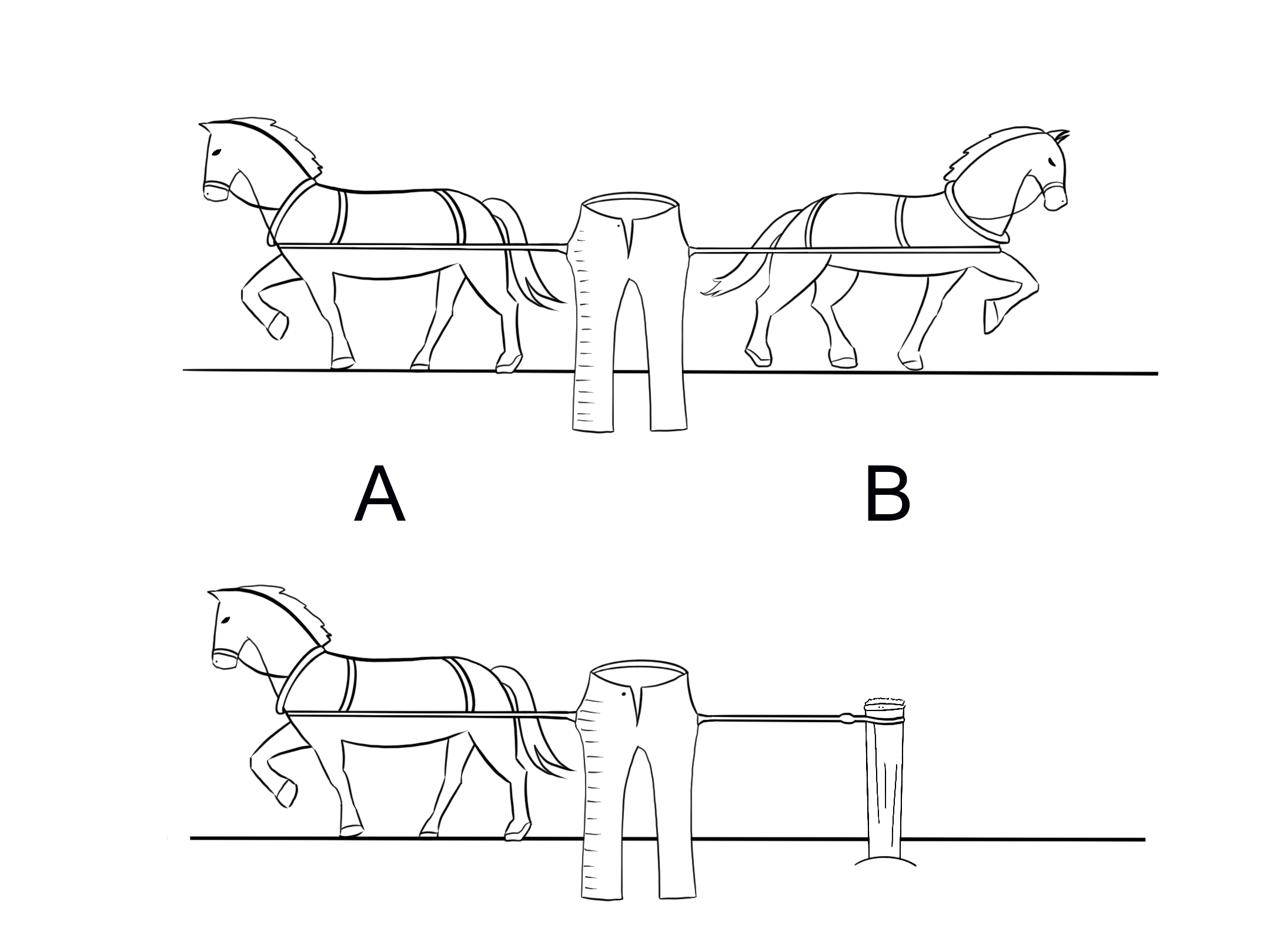Decades back I recall our pump company dress code was relaxed for a weekly “Casual Friday.” I estimate this dress code accommodation occurred in the late 1980’s or early 1990’s time frame. However, denim jeans were specifically excluded. The overly casual appearance of denim jeans would not be appropriate in view of business visitors showing up at the factory premises. A touch of coincidence or irony, depending on how one looks at it, is that BW/IP International, formerly the Byron Jackson Company, had its origins in 1872, Woodland California, and the birth of blue jeans occurred in the same year in nearby San Francisco (merchant Levi Strauss) and in Reno Nevada (tailor Jacob Davis).
My, how times have changed. Business casual, here in the U.S., now includes denim wear. In recent years even I have joined the ranks of those wearing denim blue jeans to business meetings.
The engineer in me could not help but take a closer look at the Levi’s Two Horse Brand logo patch sewn onto the right rear of the waistband.
But wait! What does this have to do with engineering?
Garment makers, especially for work clothes, understand that the corners of pockets are places likely to rip when stressed. Hence, the extra seams and sewing in these locations. But to further address this issue, riveting of the denim jeans’ stress points was a clever invention. To trademark and promote their amazing resistance to being ripped apart Levi’s came up with the idea of illustrating two horses pulling on a pair of jeans. The purpose was to market the message of their tough clothing to a late 1800’s working-class customer that often possessed minimal literary skills. These prospective customers could easily relate to the visual message of strength and toughness.
Whoa! Hold your horses! From a technical perspective, just one single horse pulling tension on a pair of jeans secured to a stationary post or a solid wall would have been enough to produce the same tensile load as shown with two horses. Think of it this way: each of the two horses can be considered as resisting the pulling action of the other. Either one of the two horses might be thought of as a stationary fixed object, with the opposite one pulling and applying the tension load on the pair of jeans.

Figure 2. Diagram of two horses versus one horse
Putting it another, way consider the diagram in Figure 2: the pulling force of Horse A on the left is resisted by the equal but opposite pulling force of Horse B on the right. Pretend now, in place of Horse B, that we tie up the jeans to a post solidly planted in the ground. The post, in place of Horse B, is now resisting the pulling action of Horse A. The tension on the pair of jeans is the same for the one horse as it is for two horses pulling in opposite directions.
Diving a bit deeper, the Two Horse Brand patch promotes that the jeans are patented, which was true for 17 years, from 1873 to 1890, while the patent was in force. The logo patch shows the jeans are pulled at the pockets creating stress through the crotch. Yes, for decades the jeans were riveted below the bottom of the button fly – but that feature was discontinued over 75 years ago. And the original Levi’s patent only applied narrowly to the riveting of the pockets.
At this point, you might be thinking, “don’t nag me with the details.” But engineers enjoy visualizing the “unseen” in our physical universe. In this case, the magnitude of force is apparently, but not actually, magnified by a factor of two. The visual impact of two horses pulling in opposite directions to rip apart a pair of jeans conveys a powerful message.
So, again, what does this have to do with engineering? Well, engineers see the world through the laws of matter, energy, space, time, and mathematics. From these understandings we have pumps that boost water to the tops of high-rises. We have communication systems connected by orbiting satellites. We have hybrid, energy-efficient cars that help drivers avoid collisions. In these and much more, the underlying technologies are important.
In a different sphere, we have the artists and marketers who promote products and services using images, sounds, aesthetics, symbolisms, and emotion. In this activity, technical details may or may not matter, but conveying the message is what it is all about.
The iconic Two Horse Brand trademark that Levi Strauss & Co. created is utterly brilliant marketing. And, using the historical fact of a patent on the label calls attention to not just the pocket reinforcements, but is symbolic of Levi’s heritage and authenticity. Here we have a durable and practical product, born of a clever way to strengthen its stress points, together with a timeless marketing message. I am only supposing that it was good fortune that an engineer was not consulted on the Two Horse design.




